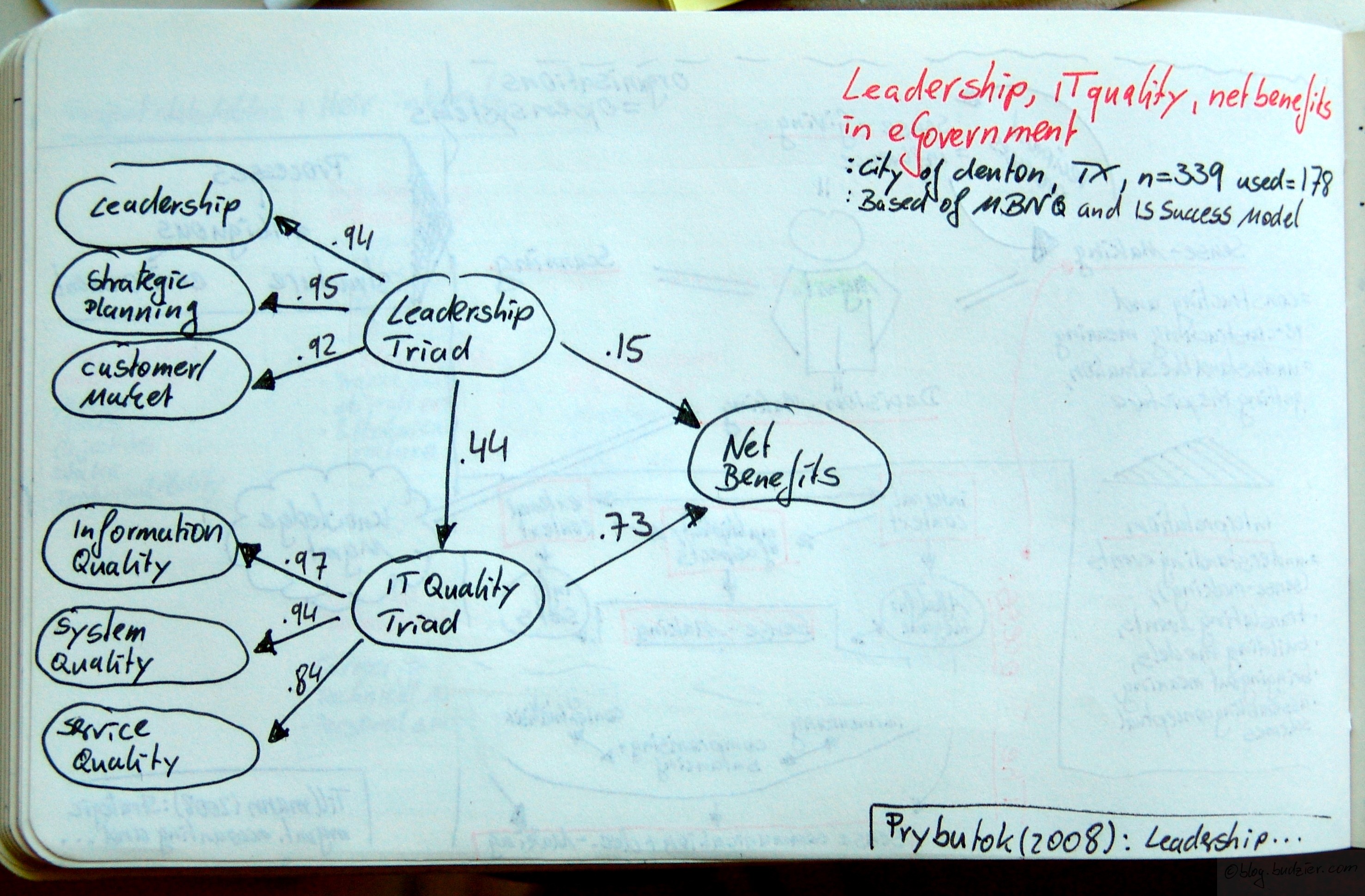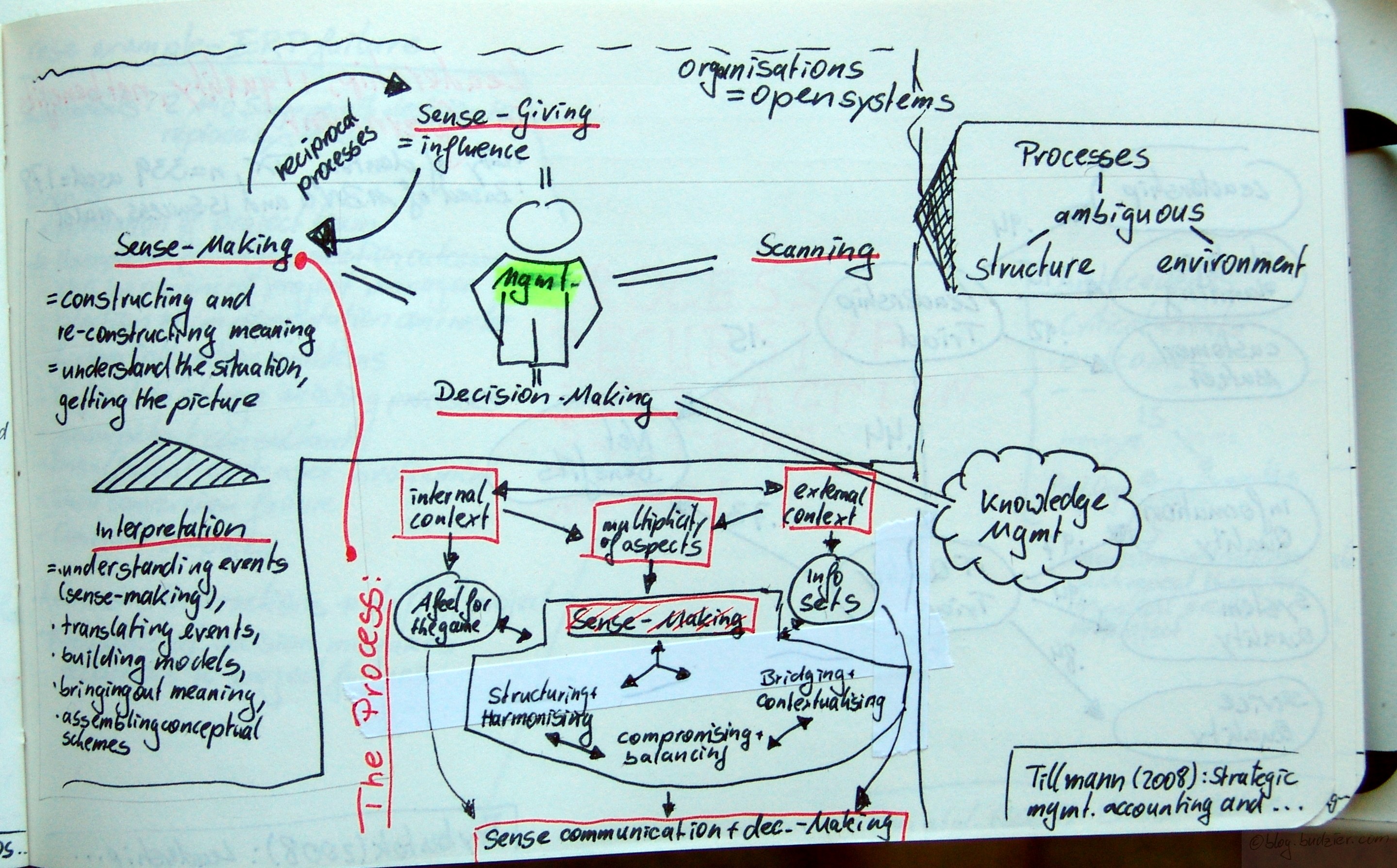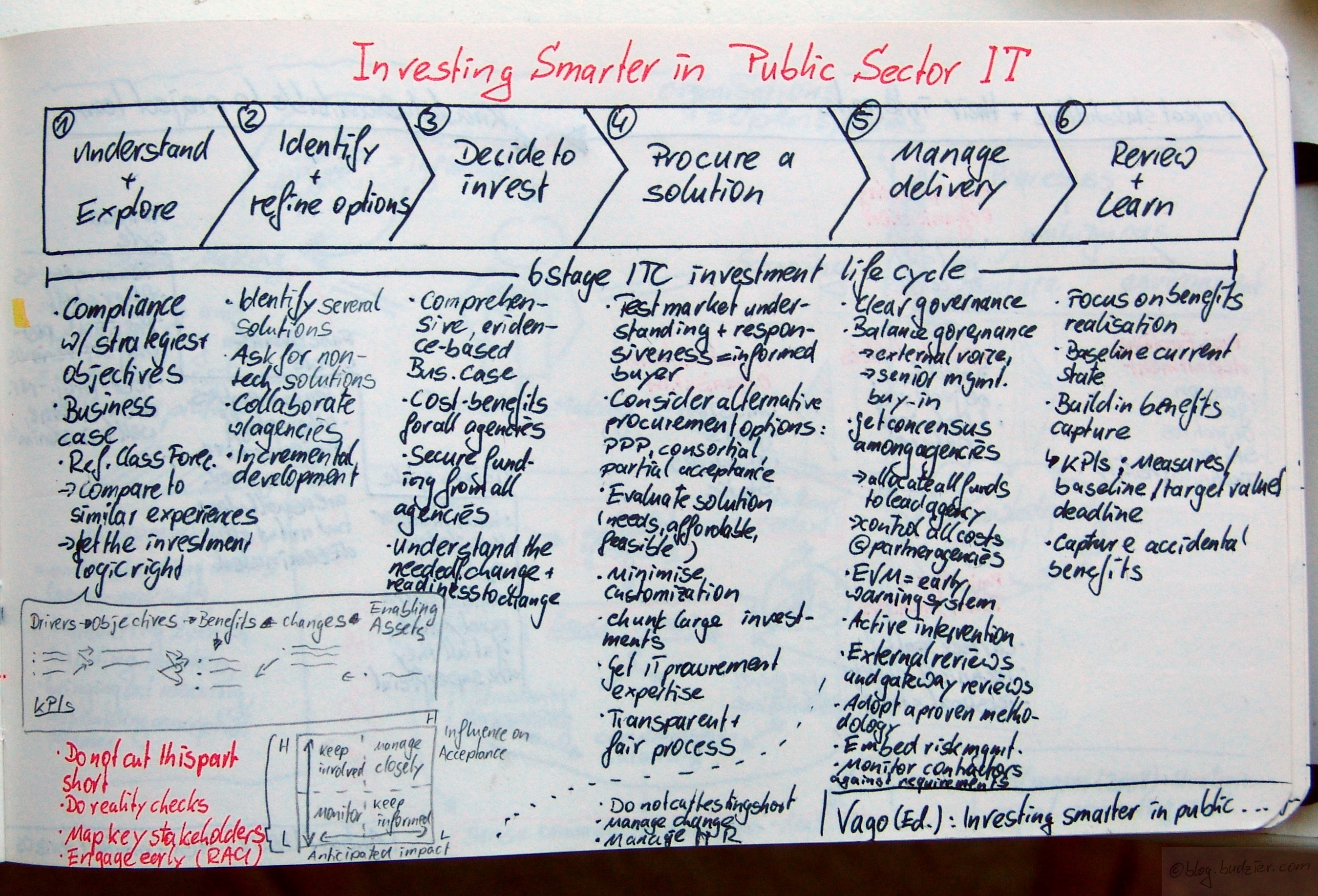Prybutok, Victor, R.; Zhang, Xiaoni; Ryana, Sherry D.: Evaluating leadership, IT quality, and net benefits in an e-government environment; in: Information & Management; Vol. 45 (2008), No. 3, pp. 143-152.
http://dx.doi.org/10.1016/j.im.2007.12.004
The authors did something quit unusual in eGovernment research, they went quantitative. Their survey consisted of 178 useful respondents among the public workers of Denton, TX. It generally tried to establish the cause-effect relationships between
- Leadership Triad
- Leadership
- Strategic Planning
- Customer/Market Focus
- IT Quality Triad
- Information Quality
- System Quality
- Service Quality
- Net Benefits
The results support the hypothesis that the MBNQA leadership triad has a positive impact on the IT quality triad. The authors also found that both leadership and IT quality increased the benefits.



